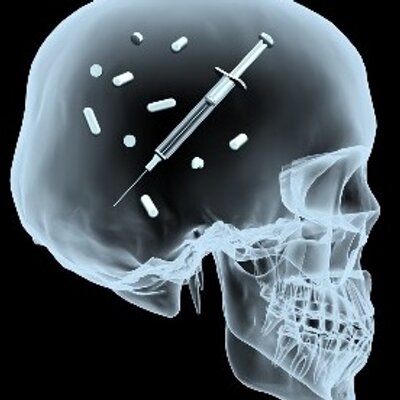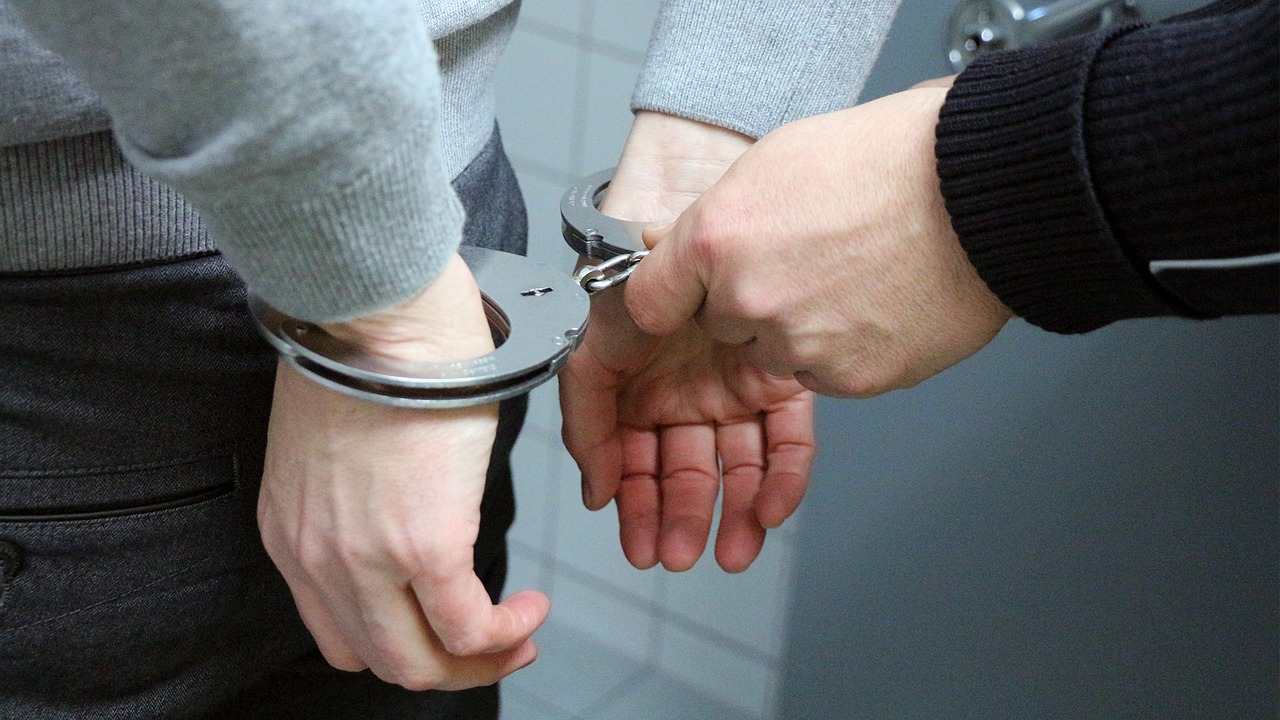According to the Drug Enforcement Administration, narcotics come in all shapes and sizes. They are a class of drug that is one of the most sought after and one of the most dangerous. There are a lot of myths that float around about narcotics and narcotics addiction. In making the decision to seek treatment for some of these addictions, it is important to understand these myths.
1. Only Low Income People Become Addicted
This is not true addiction to narcotics is spread throughout all socio-economic statuses, all races, and all religions. There is no one safe from the stigma or possibility of severe addiction. If your genetic make-up and your personality indicate that you have a higher chance for addiction regardless of who you are you have a higher chance of addiction.
2. All Addicts have Legal and Financial Problems
Although addiction often leads to legal and financial problems, most people who start an addiction do not start out with these problems.
3. Narcotics Dealers fit a Certain Look
This is also not true, narcotics dealers do not look a certain way. They can look like your stereotypical drug dealer or they could be wearing a suit and tie working in an office.
4. Drug Addicts Start Out as Bad People

Anyone can become addicted to narcotics, no matter their economic status or upbringing.
Most drug addicts are perfectly normal people just like you. It is the habit that makes them bad. The habit slowly consumes even good people’s lives.
5. You need a Specific type of Treatment to Beat Narcotics
There are many types of treatment and no single treatment will work for every person in every situation. It is important to try different types of treatment until you find one that works for you.
6. You have to Hit Rock Bottom for Treatment to Work
This just is not true. Many people seek addiction treatment long before they hit bottom. Each person has a different point where they decide that treatment is necessary. If you think that you might need treatment chances are you have reached that point.
7. Once you are an Addict you Always will Be an Addict
Although people like the label drug addict, once you’ve gone through a comprehensive drug treatment program, you are no longer addicted to drugs. If you no longer feel you are an addict then you are not one. If you still feel or allow yourself to be labeled as one, then you are. The choice is yours.
8. Drug Replacements and Other Therapies will Always Work to Stop Addiction
Again this is just not true. Nothing always woks to treat dug addition. What works for you might not work for someone else. It all depends on you and your individual addiction.
9. Everyone who tries Narcotics becomes an Addict
Contrary to popular belief it is possible to try a drug and not become addicted to it. Many people try a drug, decide they do not like it and never try it again. Whether you become an addict depends on you.
10. It is difficult to Find the Right Treatment Center for you
This is a common myth that is easily dispelled. We can help you find the right treatment and the right treatment center for you. Call us at 1- 800-934-1582(Sponsored) .
Today’s opiate overdose epidemic has swelled considerably since its beginnings, with more and more people succumbing to the addictive effects of opiates each year. Opiate overdose rates not only reflect the large number of people abusing these drugs, but also demonstrate how opiates can quickly overpower the mind and the body.
Without needed treatment help, someone abusing opiates on a regular basis will gradually lose touch with friends and loved ones as the drug’s effects take on increasing importance in his or her life. These changes in a person’s lifestyle make for prime conditions for opiate overdose events to take place. Understanding how opiates affect the brain and body can help in determining whether an abuse or addiction problem requires treatment help.
Opiate Overdose Rates

People suffering from mental illness are more likely to overdose on opiates.
With the advent of new strains of prescription pain medications, opiate overdose rates have seen considerable increases since the start of the 21st century. According to the Substance Abuse & Mental Health Services Administration, opiate overdose events accounted for 17,000 deaths in 2011.
Overall, since 1999, overdose death rates involving prescription pain medications have seen a 265 percent increase among men and a 400 percent increase among women. Likewise, opiate overdose events involving heroin have also seen a steady increase over the past decade with heroin-related overdose deaths nearly quadrupling between the years 2002 and 2016, according to the Centers for Disease Control & Prevention.
Opiate’s Damaging Effects
Physical Dependence
The conditions that make opiate overdose possible start inside the brain where opiates where away at brain cell structures. Opiates interact with essential neurotransmitter-producing brain cells and ultimately impair their ability to produce needed neurotransmitter supplies.
Before long, these cells come to rely on opiate effects to function normally. In the process, a person’s tolerance for the drug continues to increase as cell deterioration grows worse.
Psychological Dependence
As physical dependence takes hold, serious chemical imbalances develop throughout the brain. These imbalances inevitably start to impair the brain’s reward system functions. The brain reward system’s role works to coordinates learning and memory processes and uses this information to determine a person’s priorities, drives and motivations.
When a psychological dependence develops, the reward system has reached a point where the drug’s effects are viewed as essential to a person’s day-today survival. This new belief system further fuels drug-using behavior that for the most part takes over a person’s thinking, emotions and priorities.
Opiate Overdose Risk Factors
Opiate overdose risk factors can vary depending on a person’s circumstances, though certain underlying factors tend to contribute to the likelihood of an overdose event. Contributing risk factors include:
- Long-term opiate use
- Lack of a support system in terms of people who have the addict’s best interests at heart
- Poor physical health
- Mental illness, such as existing depression or anxiety disorders
- Little to no motivation to stop using drugs
Treatment Considerations
Over time, opiates exert a cumulative effect on brain and body functions, weakening the body’s overall health status along the way. Without needed treatment help, someone who keeps engaging in opiate abuse “burns the candle at both ends” in terms of the body’s deteriorating state and the increasing damage continued opiate abuse causes.
If you or someone you know struggles with opiate addiction to the point where the risk of opiate overdose is apparent, please feel free to call our toll-free helpline at 800-934-1582(Sponsored) to speak with one of our addictions counselors.
Codeine, an opiate commonly used to treat mild to moderate pain symptoms, can be obtained with a prescription as well as from any store that stocks pain relief remedies. Codeine also works well as a cough suppressant. As the first opiate drug approved for over-the-counter sales, codeine remains one of the most commonly prescribed drugs of all time, according to Dickinson College.
The dangers of codeine abuse are really not that different from those associated with other opiate drugs, such as morphine, oxycodone and even heroin. Granted, compared to other more powerful opiates, codeine produces a considerably weaker effect; however, the same mechanisms that drive heroin addiction come into play when codeine abuse starts to take shape. Understanding the dangers of codeine abuse may well help you or someone you know take the necessary steps to get needed treatment help when a codeine abuse problem spins out of control.
Codeine Mechanism of Action
Unlike many of the other opiates, codeine exists as a natural derivative of the opium poppy plant. This plant in particular houses substances that have similar chemical make-ups to the chemicals that regulate the human body’s own pain relief system.
Consequently, codeine’s chemical make-up allows for easy integration within the brain’s chemical system. This relationship lies at the heart of most every danger associated with codeine abuse. With frequent codeine use, codeine effects offset the brain’s natural chemical balance creating a state of dependency on the drug’s effects.
Codeine Dangers
Codeine Health Effects

Codeine abuse can cause tremors, seizures, and insomnia.
The effects of codeine abuse on the brain’s chemical system interfere with a range of major bodily functions. According to Columbia University, health effects from codeine abuse can take any one (or more) of the following forms:
- Seizures
- Low blood pressure
- Slowed breathing rates
- Liver and/or kidney damage
- Tremors
- Slowed heartbeat
- Constipation
- insomnia
Physical Dependence
Codeine’s ability to offset the brain’s chemical balance causes a considerable degree of damage to chemical-producing brain cells. In effect, codeine forces cells to secrete large amounts of neurotransmitter chemicals and in the process, these cells undergo structural damage from the strain. Over time, codeine abuse causes the brain to become physically dependent on codeine effects to regulate the body’s systems.
Psychological Dependence
Psychological dependence results from codeine’s having taken control of the brain’s reward system. This system determines a person’s motivations, drives and priorities and depends on stable levels of dopamine to function normally.
With codeine abuse, dopamine levels surge with each dose of the drug. Over time, these effects reconfigure the brain’s reward system functions. Once psychological dependence takes hold, a person has developed a full-blown addiction to the drug.
Overdose Risks
One of the greatest dangers associated with codeine abuse has to do with the high potential for overdose that comes with long-term drug use. In effect, codeine slows down the body’s major functions, which accounts for its pain-relieving properties.
After months or years of codeine abuse, the brain’s tolerance for the drug increases considerably as a result of the ongoing damage to brain cells. Once tolerance levels reach a certain point, users have to take incredibly large drug doses in order to experience the desired effects of the drug. With a high enough dose, codeine effects can easily shut down the body’s respiratory system leaving a person unable to breathe.
Treatment Considerations
When left untreated, the dangers of codeine abuse pose a considerable threat to your physical and psychological well-being. Ultimately, the sooner a person gets needed treatment help the better as codeine’s effects only work to cause more damage over time.
If you or someone you know struggles with codeine abuse and have further questions about codeine abuse and addiction, please feel free to call our toll-free helpline at 800-934-1582(Sponsored) for more information. Our phone counselors can also help connect you with treatment programs in your area.
While all narcotics are not illegal, there is a discrepancy in how the term itself is used and which drugs it exactly covers. Medically speaking, though, there are many narcotics that can be used legally while under a doctor’s care.
What Does “Narcotic” Mean?

Narcotics are often prescribed to treat severe pain.
Narcotic is a term that covers many types of drugs and medications, some of which are illegal to use any time while others do have safe, legal uses in the medical world. According to the National Library of Medicine, “Narcotics work by binding to receptors in the brain, which blocks the feeling of pain.” However, these drugs also create a number of other symptoms, which is why there is some confusion as to their legal status.
Narcotics are opioid-based drugs, and the term itself is just another name for these substances. As stated by the Drug Enforcement Administration, the term “comes from the Greek word for ‘stupor’ and originally referred to a variety of substances that dulled the senses and relieved pain.” While it only refers currently to those drugs that have an opioid base, whether synthetic, semi-synthetic, or natural, there is still a considerable amount of confusion over which drugs are considered narcotics and whether they are all illegal.
What is the Legal Status of Narcotics?
The DEA states, “Though some people still refer to all drugs as ‘narcotics,’ today ‘narcotic’ refers to opium, opium derivatives and their semi-synthetic substitutes.” This is the most accurate use of the term in a medical sense, and because many of these drugs, such as fentanyl, oxycodone, hydrocodone, etc., can be used legally under a doctor’s care, it is plain to see that not all narcotics are illegal.
However, the term is still sometimes used in legal situations such as court cases on drug abuse and legal writings to refer to all illegal drugs or drugs that have been used illegally. This is where much of the confusion about the term comes from. Though it can be appropriate to use it in this way in some instances, the most accurate description includes only opioid-based drugs, either illegal or prescription. Even when it is not used this way, though, it may be referring to the illegal use of legal drugs, so even in this sense, all narcotics are not, by definition, illicit.
How Can I Minimize the Confusion?
When you are referring specifically to opioid-based drugs, legal for medical use or not, it may be necessary to use the term “opioids.” This can help minimize any confusion that you may be speaking about dangerous, illicit substances when you are not. Still, know that if you use the term narcotic, its most appropriate use is associated with opioid drugs.
Even in the situation of discussing illegal drugs, it is important to know that someone talking about narcotics may not necessarily be referring to a completely illicit substances. It is important to look for context clues to find out whether or not a drug being discussed is illegal or without any type of medical use. If you have further questions about these substances or the term itself, call 800-934-1582(Sponsored) .
According to the National Institute on Drug Abuse, the use of narcotics for recreation is steadily increasing. Although some have gone out of fashion, drug manufacturers and dealers are always coming up with new ones to captivate younger users and bewitch them into addiction. If you have never tried narcotics illegally, you might wonder what is so special about narcotics.
Why do People do Illegal Narcotics?

People with an untreated mental illness often use narcotics to self-medicate.
People use illegal narcotics for a variety of reasons. Some of these reasons are general while others are the result of serious medical conditions. A few of the more common reasons are:
- mental illness – self medicating a mental illness is one of the most common reasons that people start using narcotics. They look for anything to relieve the feelings that low self esteem and low self worth cause.
- boredom – Some people just start using because they want something to do. They are bored with their ordinary life and try narcotics to relieve the boredom.
- loss of inhibitions – when someone is socially anxious or has a difficult time in social situations they may start using narcotics to make it easier for them to socialize and be around other people.
- something new to try – trying something new and different is always exciting, unfortunately, some people try narcotics because they have never done it before.
- physical illness – some people are prescribed the narcotics in order to alleviate the pain of a chronic illness or other condition.
- peer pressure – in some cases friends or even family members con you into trying narcotics. Unfortunately, many of the common narcotics are extremely addictive and you wind up addicted before you even realize it.
- accidental dosing – some people wind up trying narcotics accidentally. Although this sounds strange, there are many stories of people being drugged at parties or accidentally by being given food or drink in a strange situation.
These are not the only reasons why people use narcotics. They are just very common ones. When asked some people will say they do not know why they started using in the first place.
Why is a Narcotics Addiction Dangerous?
Narcotics addiction is dangerous because it is possible to lose yourself in the drug. Many narcotics offer a powerful escape from what is real feeling. The false feeling narcotics provide are often better than what a person, particularly one with a mental illness, feel normally. Unfortunately, the feeling is not real and it takes more and more of the drug to have the same effect. Soon the addiction takes over your life. It becomes a cycle of getting the money for the drug, finding the drug, taking the drug, coming down off the drug, and doing it all over again. Their lives become nothing but chasing the drug until there is nothing left.
How to Find Help for a Narcotics Addiction
If you’ve fallen into the trap of narcotics addiction, there is help available. Call us at 1- 800-934-1582(Sponsored) . We can help you break free from the addiction and get your life back.
The result of mixing drugs is called a drug interaction. Many drugs may be mixed safely, while others are extremely dangerous. One of the more dangerous drugs to mix are narcotics. According to the National Institute on Drug Abuse, more and more people, particularly teens, are mixing narcotics and other drugs. Sometimes the reactions are unpredictable while others the results are catastrophic.
Mixing with Alcohol
Alcohol is a depressant. When it is mixed with narcotics, the depressant effect is increased. This means that it causes:
- respiratory depression,
- central nervous system depression,
- irregular heart rate,
- coma, and
- sometimes death.
The more of each substance you mix together the worse the effect is. Taking narcotics and then drinking heavily may result in serious health consequences. There are a lot of deaths each year due to this interaction.
Mixing with Antidepressants

Mixing narcotics with antidepressants can cause serotonin syndrome, leading to cramping and diarrhea.
Mixing narcotics with antidepressants is another dangerous interaction. Some antidepressants work on the neurotransmitter serotonin. When they are working correctly, they increase the amount of serotonin in the blood. This causes a person’s mood to lift. Unfortunately, when they are mixed with narcotics, they can increase the amount of serotonin in the blood even further. This reaction is known as serotonin syndrome. The symptoms of serotonin syndrome are:
- delirium,
- diarrhea,
- cramping,
- restlessness,
- shivering, and
- severe joint pain.
If left undiagnosed serotonin syndrome can turn deadly very quickly. Unfortunately many emergency room doctors are not aware that this can happen so it is frequently misdiagnosed.
Mixing with Benzodiazepines
Mixing anything with benzodiazepines is usually not a wise decision. It is extremely dangerous when someone is taking benzodiazepines and narcotics recreationally. Large amounts of both of these drugs together frequently causes overdose. Although there is a way to counteract narcotic overdose, there is not a rapid way to counteract benzodiazepine overdose. Usually an overdose of both of these drugs at the same time causes the death of the user.
Mixing with Amphetamines
Illegal narcotics are frequently mixed with amphetamines at both the manufacturing level and dealer level. Sometimes they are mixed to produce a different type of high and sometimes they are mixed to produce a mellowing effect. Unfortunately, both narcotics and amphetamines are extremely addictive. When someone mixes them together it is possible to get addicted to both of them and then have to detox off both drugs. This means more intense withdrawal symptoms and a harder recovery.
Mixing with Blood Thinners
Although this is an unusual combination mixing narcotics with blood thinners produces an unusual reaction. It can cause the blood thinner to be too active in the blood. This can cause bleeding problems if you wind up with a cut or if you need emergency surgery. This reaction also happens when blood thinners are mixed with certain antibiotics.
Mixing medications happens more frequently when you are addicted to the narcotic. Since your body craves it, it is easy to not only take more than you intended but to take it with other medications. The only way to prevent this from happening is to break the addiction cycle. For more information on treatment for a narcotic addiction, call us at 1- 800-934-1582(Sponsored) .
Deciding to stop using narcotics is one of the hardest decisions you will make. The next step is learning how to stop using narcotics. This is not a simple thing particularly if you are addicted to them. According to the National Institute on Drug Abuse, addiction is a very complex illness and stopping sometimes takes more than just wanting to quit. Learning how to quit is an extremely important thing if you truly want to stop using.
You are Not Alone
One important step to quitting narcotics is recognizing you are not alone in your addiction. Thousands of people who seek treatment for the same problem every year. Once you are in treatment you will meet people who have similar stories and experiences.
Remember You Do Not Have to go through it Alone

An addiction specialist can help you find the right treatment for your needs.
Remembering that you do not have to go through treatment alone is also extremely important in stopping your addiction. Just as you are not alone, you do not have to go through treatment alone. Counselors, other addicts, and addiction specialists are there to help you.
Find a Form of Treatment that Best Fits You
There are many types of treatment available for a narcotics addiction. It is best that you find one that suits you, your lifestyle, and your treatment goals. Some of the treatment options are:
- Inpatient treatment – this is the type of treatment where you stay at the facility 24 hours a day and the one that people are most familiar with. While you are there you receive counseling, detox treatment, and other types of therapy. During inpatient treatment they can also help to correct your diet and help you with an exercise program to help you recover from the addiction.
- Outpatient treatment – this type of treatment is where you go to a facility at regular intervals to receive treatment. Some people go daily, weekly, or monthly depending on how much help you need. Outpatient treatment tends to be more convenient than inpatient treatment because you can continue to go to work or school while participating in it.
Further Treatment Options
Within both inpatient and outpatient treatment there are further options. Some of these options are:
- Medication – doctors provide medication as either a drug replacement or as a treatment for the cause the addiction or symptoms of withdrawal.
- Individual counseling – in individual counseling you and a therapist will try to discover the cause of your addiction and try to work through the problems that you have.
- Group counseling – in group counseling you will be with a therapist and your peers. Other people who are also struggling with addiction share their stories and you help each other get through the worst parts.
- Family counseling – in family counseling you meet with a counselor and your family. This helps to repair the damage your addiction has done to your family relationships.
There are many more treatment options available; these are just a few of the standard ones. For more information on how to stop using narcotics and for other treatment options, call us at 1- 800-934-1582(Sponsored) .
Everyone knows that you can die from a drug addiction but what some people do not understand is how those deaths happen. Many people only have a vague notion that drugs kill you. It is a morbid fact that there is not only one way that drugs kill.
Overdose
Overdose is one of the number one ways that people die from a narcotics addiction. Drug overdose is one of the leading causes of emergency room admissions, according to the National Institute on Drug Abuse. Overdose happens when someone takes too much of a drug and it begins to shut down the bodies systems. Respiratory or cardiac failure are the most common forms of overdose.
Relapse Overdose
Relapse overdose is when someone who is recovering from drug addiction takes an amount of the drug that causes them to become overloaded with it. This happens in two ways. One is over exuberance. A person becomes excited by the prospect of feeling the drug again and takes too much. The other way is when their tolerance is lowered by not using the drug and they attempt to use the same amount as before.
Overdose while being Treated

Without the proper medical attention, narcotics withdrawal can lead to death.
Overdose during treatment happens most often when someone is on a replacement drug. These replacement drugs are sometimes partially made up of the drug they are addicted to. Replacement drugs when taken with the original drug can cause dangerous levels of both drugs to build up in the system. This causes the overdose conditions.
Death During Withdrawal and Detox
Death during withdrawal or detox happens when a drug withdrawal is done without medical supervision. Alcohol and benzodiazepine detox are two types of withdrawal that regularly kill during the withdrawal process. These drugs as well as others need medical supervision before stopping the drug completely.
Mixing Narcotics and Other Drugs
Another cause of drug death is mixing drugs, usually with alcohol or a drug that has an opposite effect. These deaths are usually rules as accidental drug overdoses. This also happens when someone is prescribed too many drugs at once. When a drug addict doctor shops and the addict is accidently put on conflicting drugs death due to the mix is a possibility.
Secondary Issues
Many people die from secondary issues with addiction. These are issues such as:
- drunk driving,
- drugged driving,
- drug related infection such as HIV and hepatitis, and
- drug related violence and crime.
There are many other secondary issues that are complications of drug use. These complications include people who have secondary issues such as a weak heart or liver issues. They take the drug not knowing that it will harm already damaged systems in their bodies. When these systems fail it is both due to the condition and due to the drug. An example of this is when a person with a heart condition takes a stimulant and goes into cardiac arrest.
How to Find Help
If you are addicted to narcotics any of these issues can happen to you. Drugs both legal and illegal are deadly. Seek treatment before it is too late by calling 1- 800-934-1582(Sponsored) .
The Drug Enforcement Administration classifies the most dangerous drugs in their estimation as Schedule I drugs. These drugs have no medical use and are highly addictive. They are highly likely to be abused by people. They also have the potential to severely damage the mind and body of those that use them. There are also Schedule II drugs which have some medical use but are also highly addictive.
Heroin
Heroin is a derivative of opium and is considered as one of the most dangerous drugs. It is extremely addictive and very similar to its legal form morphine. Heroin is a very difficult addiction to break, although withdrawal will not kill you, though overdose and relapse often will.
LSD

The DEA classifies the most dangerous drugs as Schedule I and the second most dangerous as Schedule II.
LSD is a psychedelic. It causes hallucinations and other sensory distortions. As a part of the psychedelic class of drugs, many people consider it only psychologically addictive. Despite this the addiction to it is extremely difficult to overcome. It is currently being studied by researchers for medical uses in treating mood disorders and other psychological issues.
Marijuana
Marijuana is a plant that is usually smoked or ingested for its euphoric properties. Many people do not consider marijuana dangerous and there are efforts for legalization all over the United States. Marijuana was in use for centuries before becoming illegal.
MDMA or Ecstasy
MDMA is another drug that is currently being studied for its therapeutic applications. This drug produces euphoria, heightened sensory awareness, and heightened sexual response. Its powered form carries the name Molly and is extremely popular with young adults and high school students.
Methaqualone
Although it is now almost unheard of methaqualone also known as qualudes, is a respiratory and nervous system depressant. People use it as both a sedative and a hypnotic. Those who seek escape from their lives use qualudes to come down from other drugs or to sleep.
Peyote
Peyote is another psychedelic that was used for centuries before becoming illegal. It provides the user with sensory distortions and hallucinations. The use of peyote is still legal among the Native American tribes of the United States who use it in religious and cultural ceremonies. Peyote is psychologically addiction but not a physically addictive drug.
Hydrocodone
Although Hydrocodone does have a medical use the potential for abuse is so high that the CDC is calling its abuse and overdose an epidemic. Hydrocodone is a painkiller that is commonly prescribed in combination with acetaminophen.
Methamphetamine
Methamphetamine is also used medicinally but illegally manufactured methamphetamines are considered as extremely dangerous. Their manufacturing process is explosive and toxic. The drug itself reacts like most amphetamines only much more powerful. Illegally manufactured methamphetamine is often a mix of household and other chemicals. These chemical make it more dangerous and unstable to ingest. It is also one of the most addictive drugs in the world.
If you are addicted to any of these drugs and feel that you need help call us at 1- 800-934-1582(Sponsored) . We can help you find a treatment center and help for your addiction issues.
If you have an addiction to drugs or alcohol, there will come a time when your loved ones step in to see if they can help. As frustrating as this may be from where you sit, remember this: they are only trying to provide assistance as they don’t want anything to happen to you.
There are many things family members can do to help a person who is addicted to drugs or alcohol, including an intervention. They feel this is the best way to help you get sober without any delay. Of course, you feel that this is a waste of time. And the reason for this is simple: you believe you can quit at any time.
It is a common belief that an addiction is only an addiction while you are doing drugs or drinking alcohol. While you may be able to quit on your own, it is never as easy as it sounds. In other words, you should not automatically believe you can cut out drugs or alcohol without any trouble. There is a good chance you will face a variety of challenges along the way, ranging from withdrawal symptoms to concerns about relapse and much more.
Benefits of an Intervention

Your closest family and friends will be able to voice their concerns during an intervention.
There is no point in fighting your family and friends if they attempt to have an intervention. You may feel like running the other direction. You may feel like never speaking with these people again. But as noted above, they aren’t doing this to make you mad. They are doing this because they care about your health and well-being. They want to take steps in the right direction, knowing that you can once again become sober if you simply change your ways.
There are many benefits of an intervention, including but not limited to:
- Advice from loved ones who know you best. Let’s face it: there are people who truly know you and people who think they know you. If you rely on the assistance of your family and friends, you can be rest assured that they are doing the right thing.
You should never shut these people out of your life, because they make up a small group who care about what happens to you. It is easy to turn to the people who got you into trouble in the first place, but this isn’t your best support group at the present time.
- Support now and in the future. Remember this: an intervention is only the first step in the process. This is when your loved ones sit you down, tell you about your problem, and let you know that they are going to get you help. While this is the first step, it is far from the last.
You know that these people will do whatever it takes to help you out. This includes providing any assistance you require in the future. It is good to build your support team early on, as this will help you on your road to recovery.
- A push towards professional assistance. Quitting cold turkey is never easy. This may be possible if you have yet to heavily abuse a substance, but even then it can take a turn for the worse.
An intervention may be just what you need in order to realize that professional rehabilitation is a must. Once you get involved with a rehab center, it is only a matter of time before you pinpoint what went wrong, how to change it now, and the steps to take to remain sober for the rest of your life.
Don’t Fight an Intervention
If you walk in on an intervention, your first feeling may be anger. You don’t want people calling you out. You don’t want your loved ones knowing that you have a problem. This is natural. Although you may want to fight, you should sit down and hear your loved ones out. They will make good points that could allow you to better understand your situation.
Here is something to remember: the way you see yourself is not the way you are viewed by outsiders. This is why you should at least participate in the intervention. As difficult as it may be, it could give you a different perspective on your life and where it is headed if you don’t make changes for the better.
The most common excuse for avoiding an intervention is this: I can quit anytime, so what is the point in getting help from others? If you believe this to be true, you should attempt to become sober without delay.
It doesn’t matter if you are addicted to heroin, prescription drugs, or alcohol, if you have a problem there are people out there who can help. You may want to fight against an intervention, but it is likely in your best interest. This could be the first step in becoming sober and realizing that you have more to live for than your addiction. For more help, call us today at 800-934-1582(Sponsored) .










